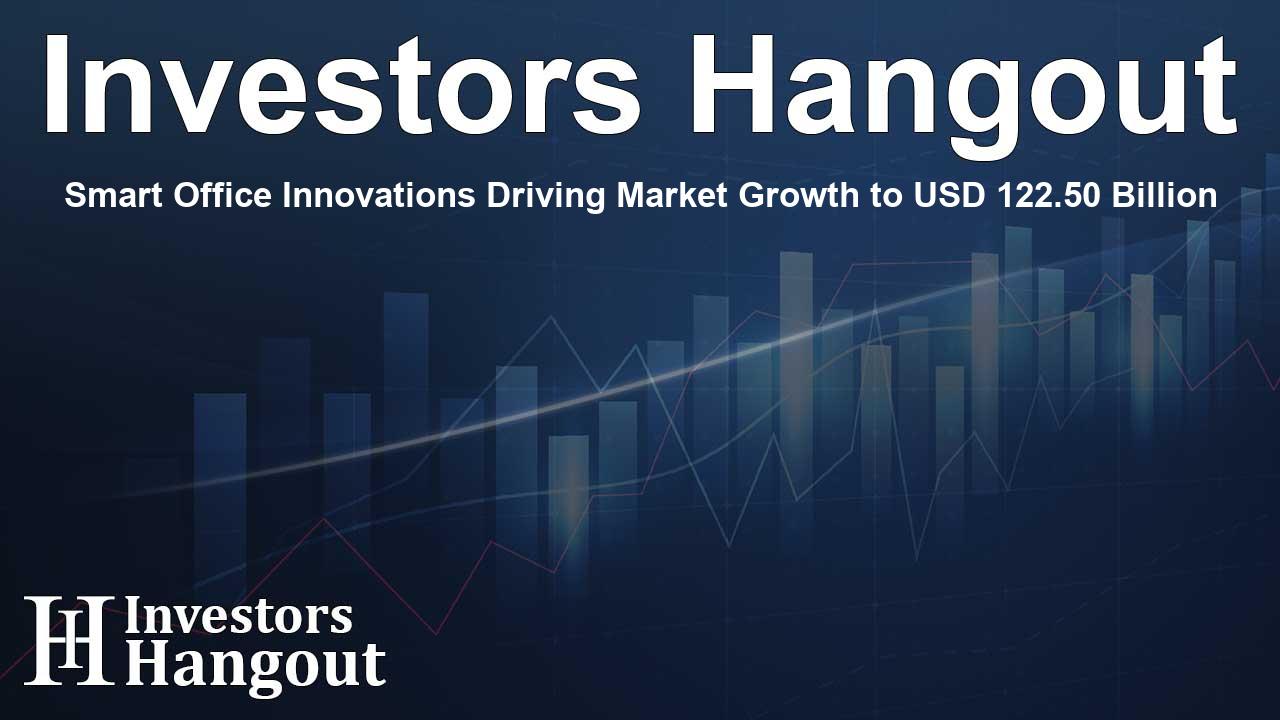Smart Office Innovations Driving Market Growth to USD 122.50 Billion

Smart and Connected Office Market: Future Growth Insights
The Smart and Connected Office market is poised for substantial growth, as indicated by recent analyses predicting a rise to USD 122.50 billion. Innovations in workplace technology promise to transform how organizations utilize their physical spaces and manage resources.
Driving Forces Shaping the Smart Office Landscape
The driving forces behind this expansion include the adoption of automation technologies that streamline operations and enhance efficiency. Companies are increasingly investing in Internet of Things (IoT) devices, allowing for sophisticated management of lighting, temperature, and security systems. These technologies not only save on energy but also cultivate a more comfortable environment for employees.
Automation and Energy Efficiency
By implementing smart office solutions, businesses can reduce energy consumption significantly—smart lighting can lower usage by up to 30%, while intelligent thermostats have been shown to bring down heating and cooling costs by 10% to 12%. Projections suggest that by 2025, 80% of companies will embrace some level of automation, further driving demand within the market.
Enhancing Employee Experience
Smart offices not only save money but also enhance employee engagement, with studies indicating a potential increase of 20% in satisfaction levels due to improved work environments. The presence of smart cities, supported by investments estimated at USD 1.8 trillion aimed at integrating IoT technologies into urban designs, continues to be a catalyst for further growth in this sector.
Leading Players and Their Innovations
Several key players are shaping the Smart and Connected Office landscape with their innovative products and services. Companies like Cisco and Microsoft are at the forefront, providing software solutions such as Cisco Webex and Microsoft Teams, which facilitate collaboration. Notable hardware providers include Honeywell and Siemens, leading the way in building management solutions.
Comprehensive Hardware Solutions
The hardware segment captured a significant portion of the market, accounting for 46% of total revenue in recent years. Essential components like sensors and control systems enable functionality, while companies such as Honeywell, Siemens, and Crestron offer advanced solutions that enhance safety and operational performance.
Market Segmentation and Trends
In terms of office types, retrofitting continues to dominate the smart office sector, capturing 56% of total revenue. This approach allows for the modernization of existing workspaces without extensive renovations, providing a cost-effective solution to enhance sustainability. Companies like Schneider Electric and Johnson Controls drive innovations aimed at integrating smart technologies with minimal disruption.
Regional Insights into Smart Office Adoption
In 2023, North America led the market with 43% of total revenue, bolstered by technological investments from tech giants and government initiatives aimed at enhancing energy efficiency. Meanwhile, the Asia-Pacific region has emerged as a rapid-growth driver, with nations like China and India swiftly adopting smart office strategies. Technology hubs in these regions, such as Tata Consultancy Services and Samsung, are integrating cutting-edge IoT solutions to facilitate workplace adaptability.
Recent Technological Developments
Recent advancements in technology are further enhancing smart office environments. Notably, Cisco’s introduction of AI-powered devices and Microsoft’s integration of IoT features in its software are examples of how companies are innovating to improve work experiences. These developments cater to the increasing demand for integrated solutions that facilitate hybrid work settings.
Frequently Asked Questions
What is the projected growth of the Smart and Connected Office market?
Analysts project the Smart and Connected Office market will expand to USD 122.50 billion by 2032, with a compound annual growth rate (CAGR) of 12.30%.
Why are companies adopting smart office technologies?
Companies are increasingly adopting smart technologies to enhance operational efficiency, reduce costs, improve employee satisfaction, and meet sustainability goals.
What are some examples of smart office solutions?
Examples of smart office solutions include IoT-enabled lighting systems, climate control devices, and advanced security systems that optimize energy use.
Which regions are leading in smart office adoption?
North America currently leads the smart office market, while the Asia-Pacific region is experiencing rapid growth due to increasing adoption rates in countries like China and India.
Who are the key players in the Smart and Connected Office market?
Key players include Cisco, Microsoft, Honeywell, Siemens, and many others, all contributing to growth through innovative solutions in hardware and software.
About The Author
Contact Thomas Cooper privately here. Or send an email with ATTN: Thomas Cooper as the subject to contact@investorshangout.com.
About Investors Hangout
Investors Hangout is a leading online stock forum for financial discussion and learning, offering a wide range of free tools and resources. It draws in traders of all levels, who exchange market knowledge, investigate trading tactics, and keep an eye on industry developments in real time. Featuring financial articles, stock message boards, quotes, charts, company profiles, and live news updates. Through cooperative learning and a wealth of informational resources, it helps users from novices creating their first portfolios to experts honing their techniques. Join Investors Hangout today: https://investorshangout.com/
The content of this article is based on factual, publicly available information and does not represent legal, financial, or investment advice. Investors Hangout does not offer financial advice, and the author is not a licensed financial advisor. Consult a qualified advisor before making any financial or investment decisions based on this article. This article should not be considered advice to purchase, sell, or hold any securities or other investments. If any of the material provided here is inaccurate, please contact us for corrections.
